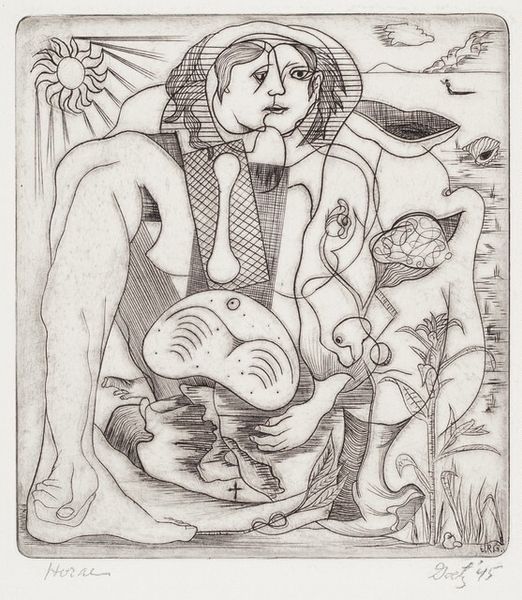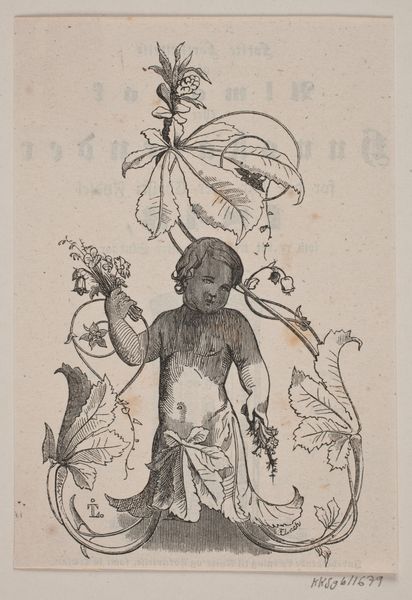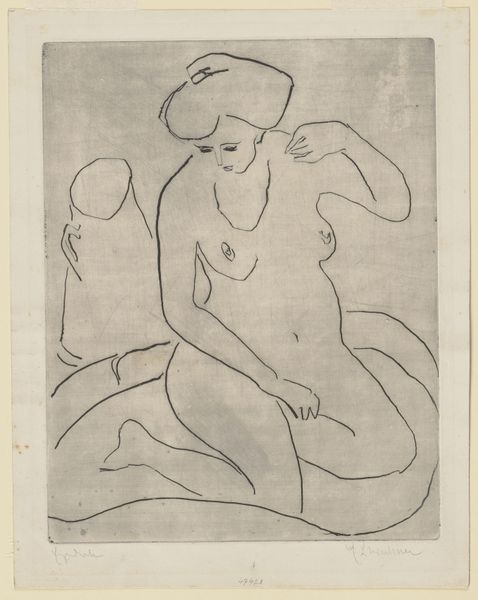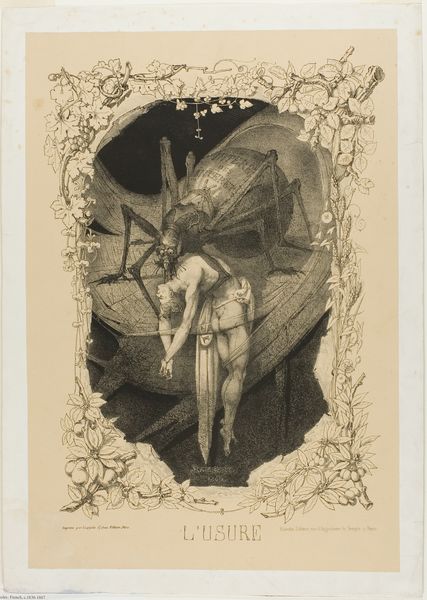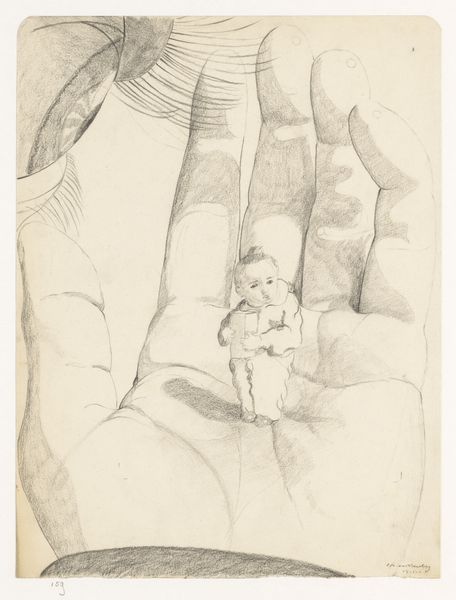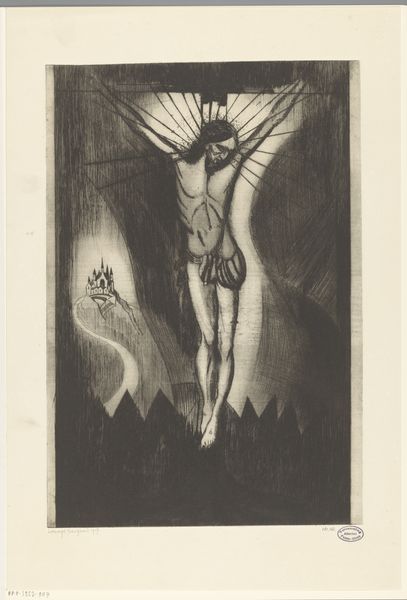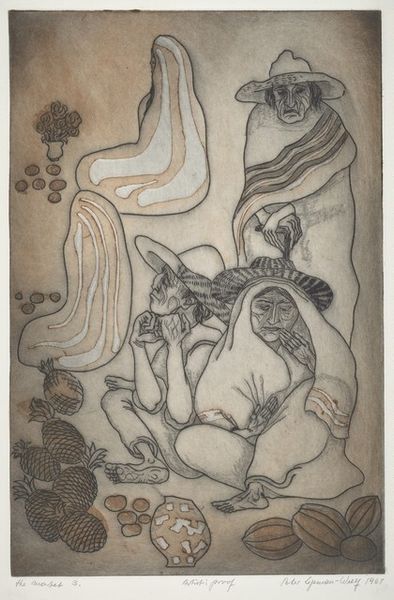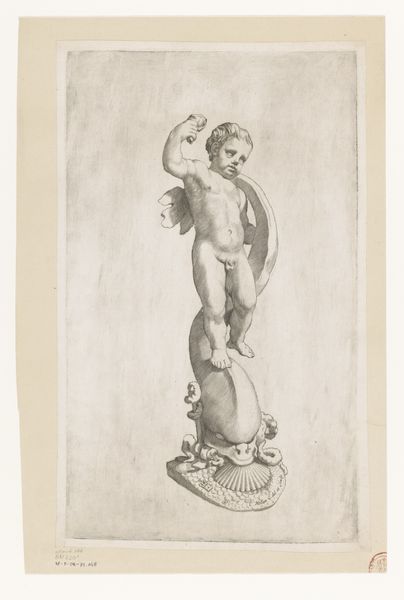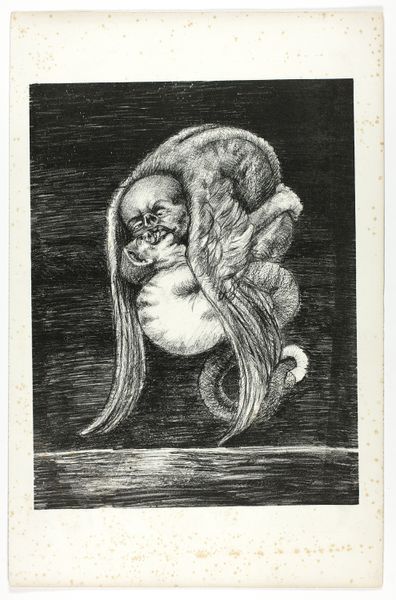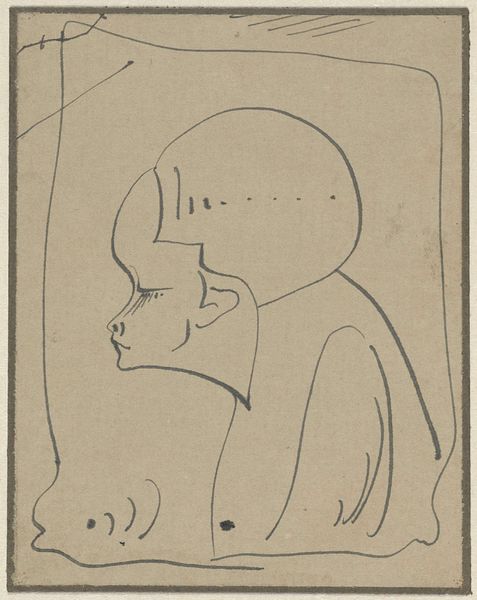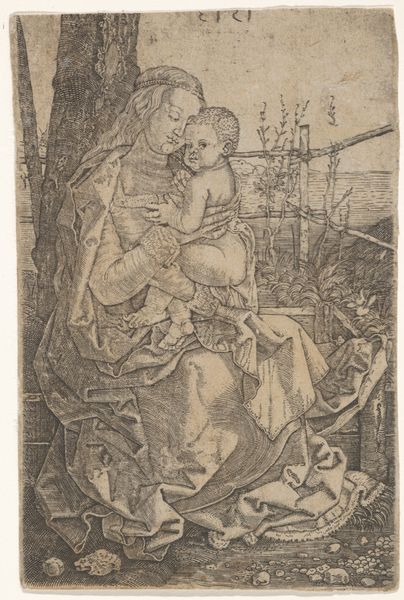
print, etching
# print
#
etching
#
landscape
#
figuration
#
symbolism
#
nude
Dimensions: height 790 mm, width 597 mm
Copyright: Rijks Museum: Open Domain
Editor: Lodewijk Schelfhout’s etching, “Andreas,” created in 1916, features a child figure superimposed over a vast landscape. I find the composition rather unsettling – it feels dreamlike but also a bit ominous. What do you see in this piece? Curator: The overwhelming symbolism strikes me first. The child, Andreas, seems to represent innocence, perhaps a symbol of a new generation amidst the turmoil of the early 20th century. Consider the objects surrounding him: a rabbit signifying fertility and vulnerability, an open book perhaps suggesting knowledge and learning, juxtaposed against a landscape marked by fields and what appears to be a distant war. Editor: War? I didn’t immediately make that connection, but seeing it now the perfectly lined fields and distant industrial plumes feel more imposing. And he holds a flower in one hand, a long staff in the other... It’s almost like he's bearing witness. Curator: Exactly. The flower and the staff are poignant contrasts. The flower speaks to fragility, ephemeral beauty, and life itself, whereas the staff terminating in what appears to be a cross is loaded. It might represent protection, guidance, and even the weight of history that the child must bear, or what he has to overcome. Do you notice the light and how it sets the emotional tone? Editor: Yes, now that you mention it! The rising sun – or perhaps a sunset? – casts long shadows and further accentuates that feeling of foreboding. Is there a conscious allegory or a message behind the child's somewhat stoic pose? Curator: The ambiguity is powerful. It prompts viewers to consider their hopes and fears for the future, embedded in the image of a single child set against a world on the cusp of profound change. It speaks volumes to anxieties surrounding war and the longing for a new, more innocent beginning. Editor: I see it now. Initially, it felt unsettling, but understanding these symbolic layers provides a powerful, if somewhat tragic, context. Curator: It is a work that stays with you precisely because it's not easily resolved, a testament to art's capacity to engage with the complexities of human experience.
Comments
No comments
Be the first to comment and join the conversation on the ultimate creative platform.
